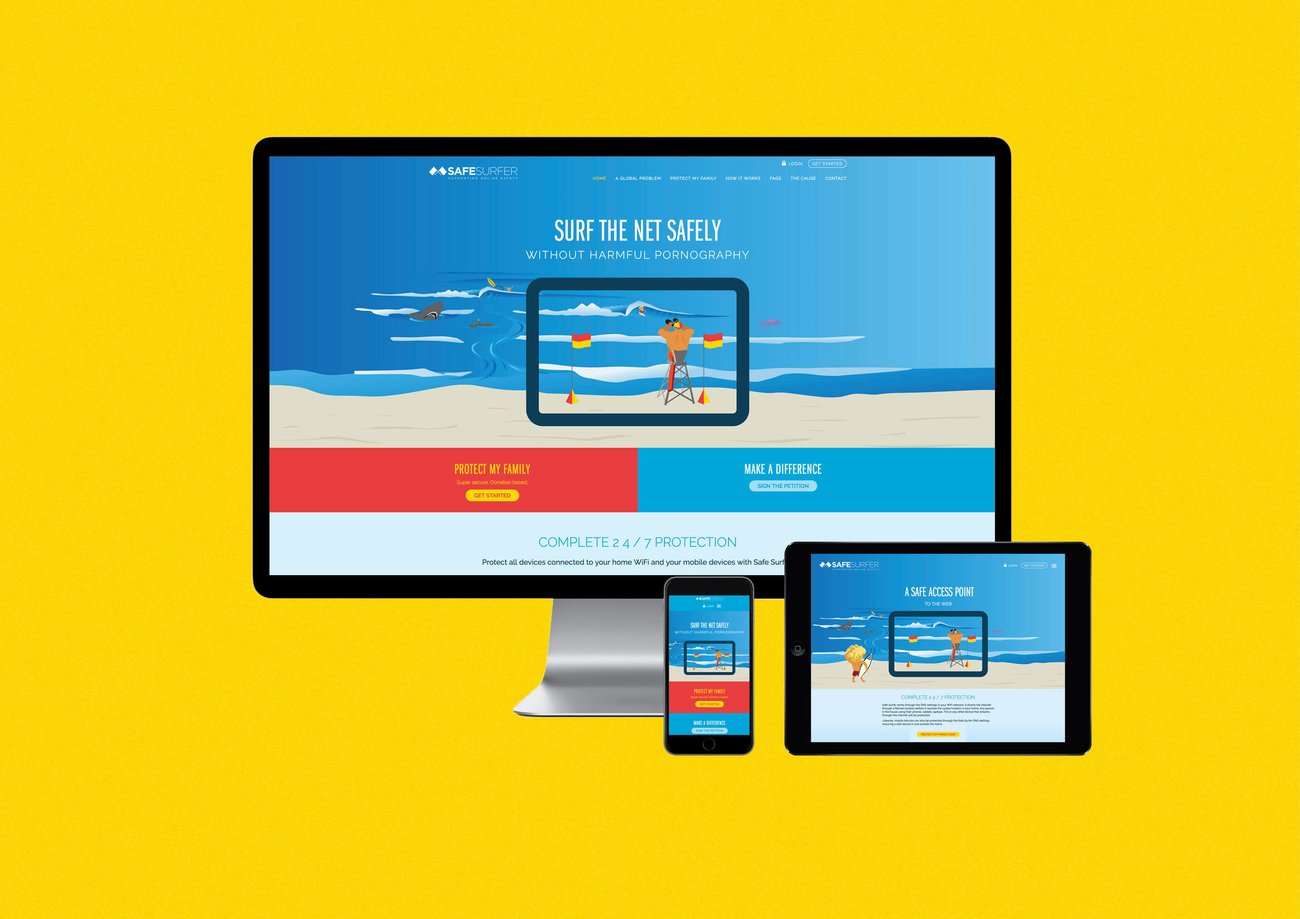Riding the wave: Tauranga-based Safe Surfer crowned ‘Tech Innovator of the Year’

The sheer scale at which Safe Surfer has grown is impressive, considering it launched just two years ago.
Founders Rory Birkbeck and Aaron Sinclair are both IT professionals raising families in Mount Maunganui.
Birkbeck says they were motivated to start Safe Surfer in 2016 when they saw there weren’t any decent tools for parents to help them navigate the wild west of web content their children were facing on a day-to-day basis.
“It was the fact we wanted to put something in place for our own family,” Birkbeck says.
“We had a look initially and were made aware that the internet was a very unfiltered place for kids. We had friends, our own families and community starting to say, ‘What can you do [to manage this], what’s out there?’”
According to Webroot, 34 percent of internet users have been exposed to unwanted porn via ads and pop-ups, while a Colmar Brunton poll found 82 percent of 16 to 18-year-olds in New Zealand have seen pornography.
Though there are other options on the market to regulate what content kids can see online, Birkbeck says they weren’t the most user friendly.
“With Safe Surfer, it was us taking a design-led approach to create a friendly brand, but bringing in some real impactful technology that didn’t exist at the time. That combination of factors has really sparked the massive interest it’s had.”

Rory Birkbeck (left) and Aaron Sinclair
Bay of Plenty based branding agency Woods was responsible for Safe Surfer’s look and feel, which nabbed a bronze pin in the Public Good Award category at the Best Awards last year.
Woods managing director Reuben Woods says when Birkbeck and Sinclair approached them, all they had was a basic website.
“It was non-consumer focused, non-emotive, and quite dark. They were playing off more of the negative rather than, ‘how do you turn this into a positive?’” Woods says.
Birkbeck says they had seen a lot of hard statistics and data about the harms of pornography on young kids, but they didn’t want to convey this information in an ominous way.
“We didn’t want to confront parents with a message of fear – we wanted to confront them with an actual solution, and offer help and assistance rather than doom and gloom,” he says.
Woods came up with the surf lifesaving analogy to use throughout Safe Surfer’s branding as a metaphor for protection.
“It flips it from being a negative to being a positive,” Woods says. “The bright colours say we’re here to help and here for you – it’s the perfect visual metaphor for what these guys were trying to convey.”

And with Safe Surfer’s global reach now (more than 120 countries and counting), he says the message is universal.
“Even in China where there is no ocean, they still have lifeguards with red and white flags set up at pools, so that concept cuts through everyone – everyone can associate safety with that symbolism internationally.”
When Safe Surfer’s site was relaunched, it went from 5000 users to 250,000 users within six weeks. It’s also modelled as a charity, with people granted access to its products via a donation.
On the technology front, Safe Surfer started off as a tool where people could create the settings on their own router, but Birkbeck says it wasn’t quite ‘bulletproof’ as settings could drop off if the router was restarted, for example.
The second stage was releasing a smartphone app. Birkbeck says rather than being locked in a safe browser, the Safe Surfer tech runs in the background of the phone, covering off all apps and websites.
This caused a stir internationally, Birkbeck says, with 150,000 people downloading the android app. Among the downloaders were concerned parents, but it also struck a chord with people battling porn addictions.
Now, the ‘Lifeguard’ device it launched late last year attaches to any modem and blocks websites that contain violence, gambling, pornography and other harmful material.
“Through our infrastructure, we were able to classify content on the fly – so as people hit it, it starts building its own data base and cataloguing system, so we know if something’s gambling, alcohol related, porn related or whatever it might be,” Birkbeck says.
“We can give parents a custom way of setting a profile for each and every single device. In New Zealand at the moment, there’s nothing that does that at a per device level. In terms of customising your device, you get all of this capability, like setting time limits for time of day you want your kids on certain devices, pause or stop the internet – all of that has been done creating a simple user interface.”
The organisation has also been given a $2000 grant to create a book about staying safe online that will be distributed for free to schools.
Going forward, Birkbeck says even though Safe Surfer’s technology has spread to the far corners of the globe, the focus is still on creating impact locally and nationally.
“The internet is a massive experiment that our generation’s parents have been thrown into, so we really want to be at the helping end of getting to parents and help them through dark struggles,” he says.
“We’re hugely passionate about our cause and our impact, which is trying to raise prevention levels around kids and them stumbling into pornography at young ages. We’re already starting to see that it solves a whole raft of issues.”




